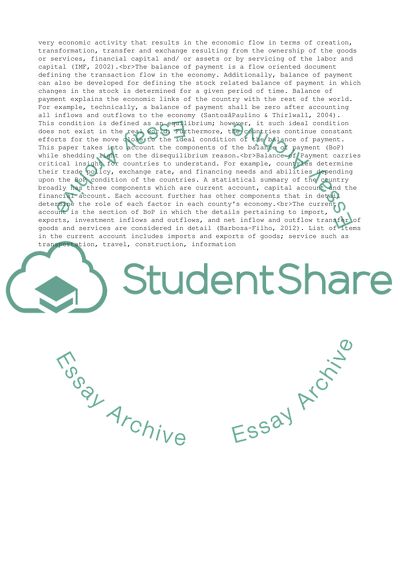Cite this document
(Discuss in detail the components of the Balance of payments account Essay - 1, n.d.)
Discuss in detail the components of the Balance of payments account Essay - 1. https://studentshare.org/macro-microeconomics/1813326-discuss-in-detail-the-components-of-the-balance-of-payments-account-does-the-balance-of-payments-account-balance-if-the-account-is-in-dis-equilibrium-what-can-be-done-to-bring-the-account-into-balance-explain-your-answer-with-relevant-examples-and-argu
Discuss in detail the components of the Balance of payments account Essay - 1. https://studentshare.org/macro-microeconomics/1813326-discuss-in-detail-the-components-of-the-balance-of-payments-account-does-the-balance-of-payments-account-balance-if-the-account-is-in-dis-equilibrium-what-can-be-done-to-bring-the-account-into-balance-explain-your-answer-with-relevant-examples-and-argu
(Discuss in Detail the Components of the Balance of Payments Account Essay - 1)
Discuss in Detail the Components of the Balance of Payments Account Essay - 1. https://studentshare.org/macro-microeconomics/1813326-discuss-in-detail-the-components-of-the-balance-of-payments-account-does-the-balance-of-payments-account-balance-if-the-account-is-in-dis-equilibrium-what-can-be-done-to-bring-the-account-into-balance-explain-your-answer-with-relevant-examples-and-argu.
Discuss in Detail the Components of the Balance of Payments Account Essay - 1. https://studentshare.org/macro-microeconomics/1813326-discuss-in-detail-the-components-of-the-balance-of-payments-account-does-the-balance-of-payments-account-balance-if-the-account-is-in-dis-equilibrium-what-can-be-done-to-bring-the-account-into-balance-explain-your-answer-with-relevant-examples-and-argu.
“Discuss in Detail the Components of the Balance of Payments Account Essay - 1”. https://studentshare.org/macro-microeconomics/1813326-discuss-in-detail-the-components-of-the-balance-of-payments-account-does-the-balance-of-payments-account-balance-if-the-account-is-in-dis-equilibrium-what-can-be-done-to-bring-the-account-into-balance-explain-your-answer-with-relevant-examples-and-argu.


